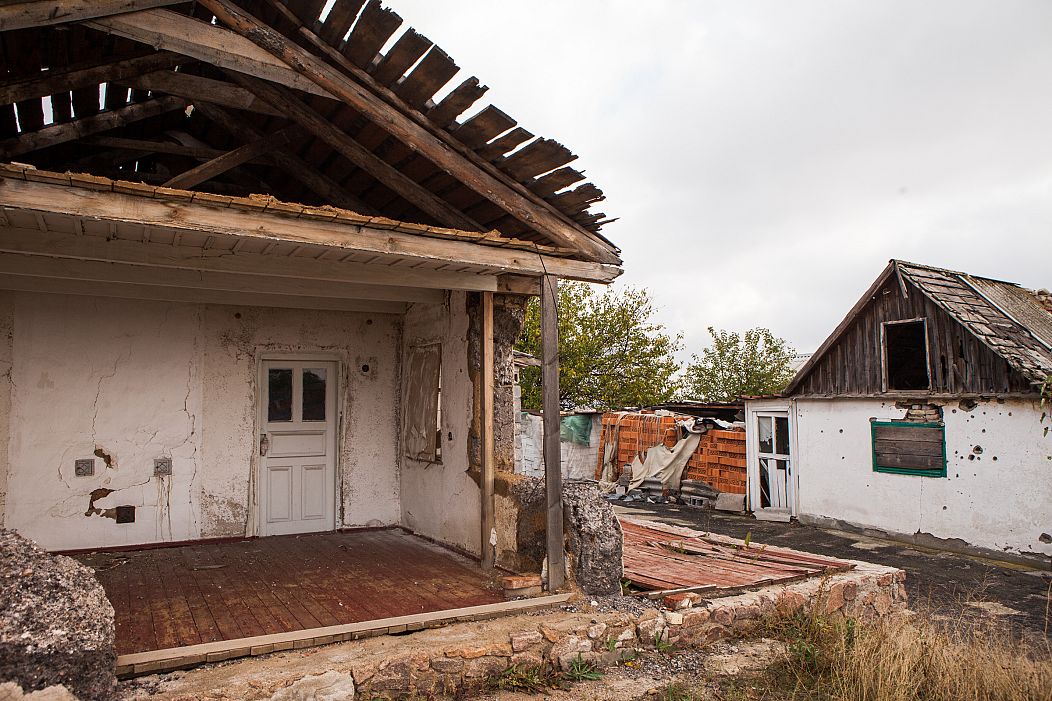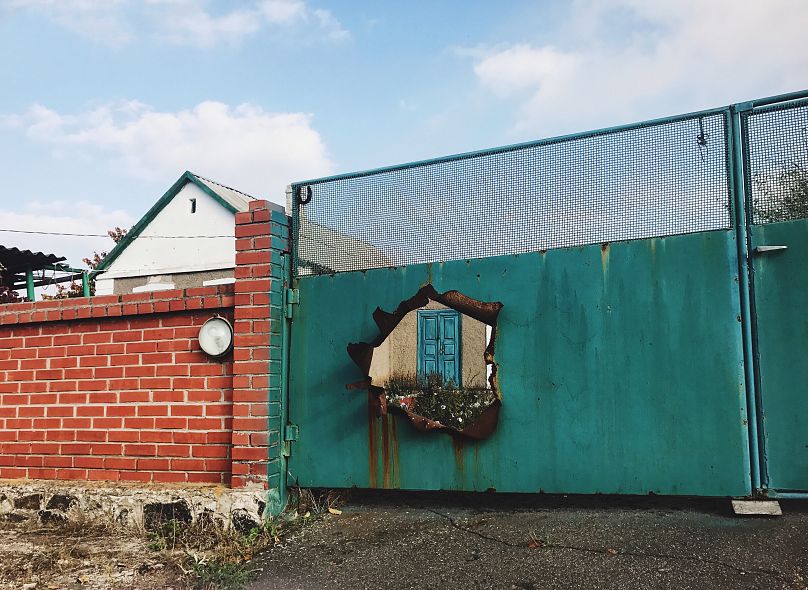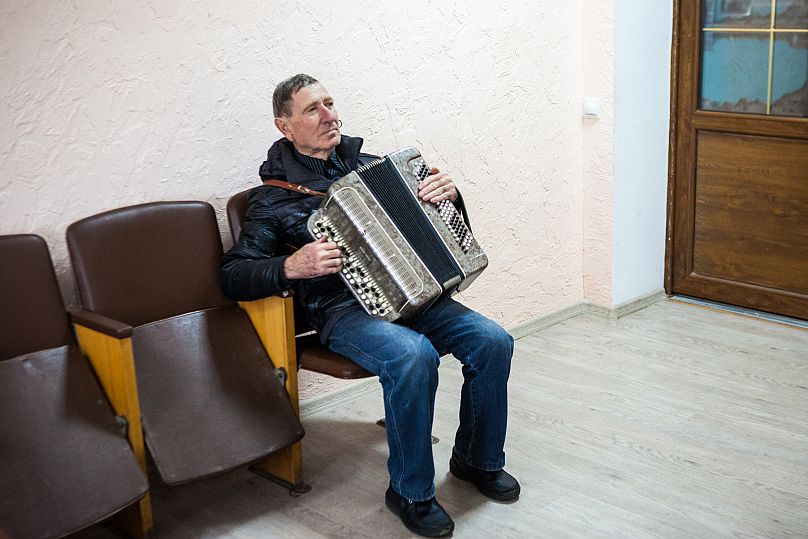In Hranitne, a village at the heart of the war zone in eastern Ukraine, even the cemetery was not a place of peace.
“Can you see that shell crater near the house over there? That’s where it happened.” Vasylyna Nikolaeva, a local official in a frontline village in eastern Ukrainian, points into the distance. Among the countless stories of terror and loss from the conflict in eastern Ukraine, this is one that stands out.
The tells of the personal tragedy of a family she knows; a couple with two children. One day they left to travel to a nearby town. “They left their older daughter with a neighbour, as the journey would be very dangerous and tiring. But that day, the neighbour’s house was hit by a missile and the child was killed. The neighbour was injured.”
But even in death, peace was far from a given in Hranitne, which is located on the banks of a river that marks the so-called ‘contact line’ between Ukrainian government and separatist-controlled territory.
When the grieving family returned to their daughter’s grave a day after her burial, they found it destroyed by artillery. A frequent target for shelling, the cemetery was closed until recently, deemed too dangerous to visit.
Nikolaeva is our guide in the village, giving us the tour of the local community centre and administrative buildings - all of them carrying the scars of the conflict just like the residents living in the villages. As she shows us around her personal memories come flooding back.
When the war broke out in 2014, Vasylyna was pregnant and working inside one of these administrative buildings. During one attack she remembers how colleagues hid her in the toilet, away from the windows. If nothing else, it gave them the illusion of safety.
And then there was the time she and her husband had to run barefoot to the underground cellar in their yard to take shelter from the shelling. They remained holed up all night. Soon they decided they could not stay. They slaughtered their cows and in a car packed with raw meat and their personal belongings they fled across the dangerous road that had come under almost constant fire.
Later she and her family returned. Her child is three now and the village is much safer but the atmosphere remains tense. Occasionally shells still hit.
Hranitne’s streets are quiet. Pedestrian and passing cars are rare, and those that are out and about start walking that bit fast when they see my camera. But there is life behind the doors of a village council. Loud music is playing and corridors are crowded with people. Two village bands were rehearsing in the community centre and a group of activists are holding a meeting in Nikolaeva’s office.
Most of the damage in the village was done in 2014 and 2015, many half-ruined houses were left behind since then. Repairing the local hospital building, which also served as a library and a music school for kids, has been taking years, local population and international funds participating.
Of the 3800 people registered in Hranitne before the start of the conflict, around 3000 are still living there. Some 40 percent of the population in Hranitne are pensioners, according to the local council. And then there are about 270 children attending school or kindergarten. The population falls slightly during the harsh winters, as some residents leave to stay with their relatives elsewhere. Heating has become unaffordable for many.
Living on the Contact Line
In communities along the frontline, those who stayed are often the most vulnerable. Older residents are sometimes forced to risk their lives walking through minefields to collect their small pension as cars have been banned in some areas.
People continue to be killed in the villages and towns along the contact line. Despite the Minsk Protocol and Minsk II agreement, which was meant to restore peace in Donbas in 2015, no real truce was ever reached and the forgotten war rages on. Between the middle of November last year and mid-February, the UN registered 73 civilian casualties. Twelve of them were killed.
“Fighting continues every day. The contact line runs through the villages. That’s why people suffer a lot," says “Natalia Shapovalova”, an expert at foreign policy analysis institution Carnegie Europe. "The population lives in a permanent crisis situation for four years now. They are under constant pressure, even on days their villages aren't hit, they still hear the sounds of explosions.”
Some communities live without electricity. The coal in the historical mining region is too expensive for the local population to be able to heat their homes. To add to the misery, the threat of an ecological catastrophe is never far from people’s minds, with many of the coal mines having fallen into decay since the start of the conflict, polluting drinking water and causing gas to build up.
Families have not only been split but many have not even to able to communicate with their loved ones. Recently mobile phone calls made from separatist-held areas cannot reach the rest of Ukraine. To get some news from their families and friends, people are putting themselves into even more danger by venturing close to the contact line to catch some signal. On the government-controlled side access to internet has become invaluable to get in touch with often elderly family members living across the frontline.
Nikolaeva, like many others, is trying to keep firm sight of the future now and hopes that things will slowly improve again. “All our efforts are now focused on restoring the social institutions, for kids, the elderly, and handicapped people."
The band rehearsing at the local council look forward to a local festival. "If we don’t hold the festivals, there is no life. If there is no development for kids, sports activities, then it's just an existence. People are so exhausted here that these few hours they spend participating in some event means a lot for them to keep going”, she says.














